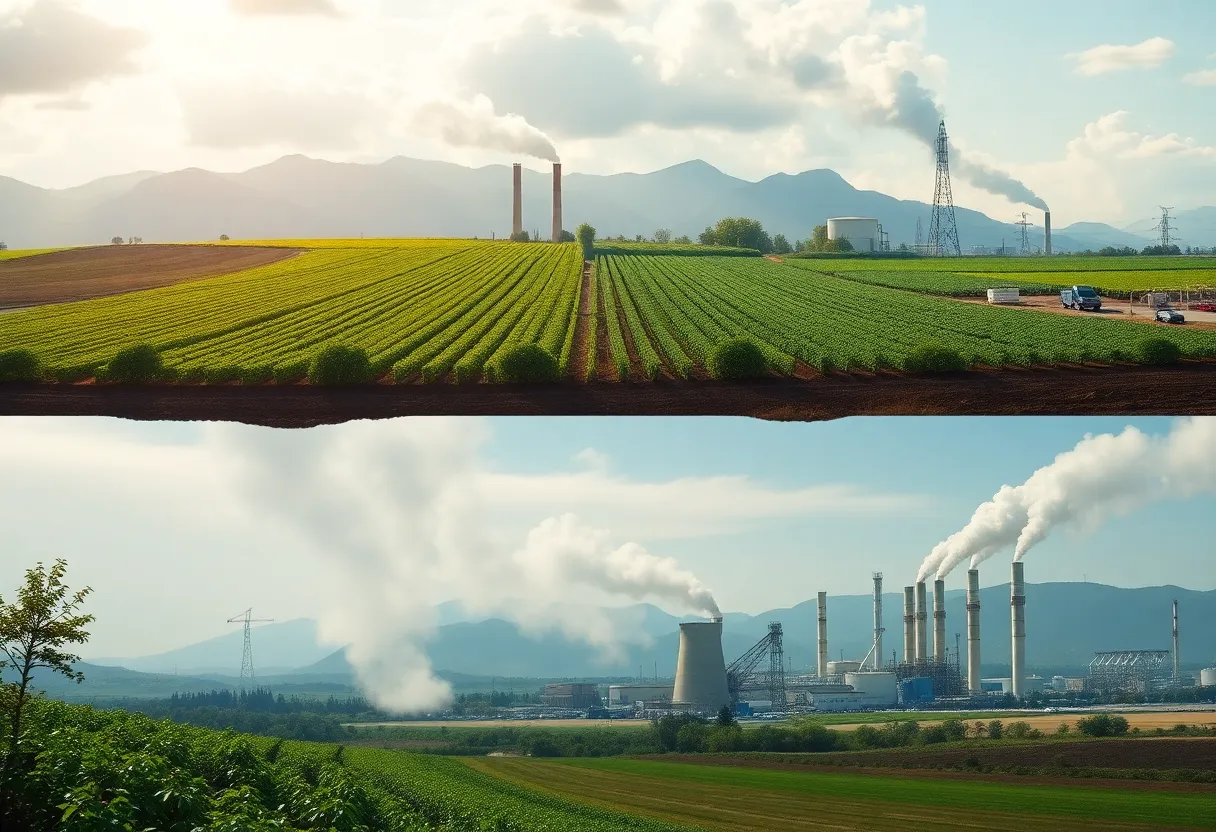News Summary
The Trump administration has signed an executive order aimed at halting state climate change laws, significantly impacting initiatives like California’s cap-and-trade program. The order directs the Attorney General to review and challenge state regulations that the administration deems as hindering energy dominance and national security. This move is expected to create legal uncertainties and may delay proposed legislation geared towards reducing emissions. The backlash from state leaders and environmental advocates is likely, as they assert their commitment to climate action despite federal opposition.
Trump Administration Takes Aim at State Climate Policies
In a significant move, the Trump administration signed an executive order on April 8, taking a hard stance against state climate change laws. This order is particularly contentious because it is aimed at undermining the ability of states to enforce their own environmental policies, with a spotlight on California’s ambitious climate initiatives.
Stopping State Enforcement of Climate Laws
The executive order is not just a minor adjustment; it demands that the enforcement of state climate rules be halted. This means states may struggle to implement laws designed to combat climate change, impacting their ability to move forward with important programs. California, in particular, fights to maintain its cap-and-trade program, which sets the limits for greenhouse gas emissions and is deemed vital for tackling climate challenges.
The Administration’s Concerns
At the heart of the executive order, President Trump directed Attorney General Pam Bondi to find and put a stop to state laws that address climate change. The administration expressed concern that many state policies may be undermining what they refer to as “American energy dominance” and even national security. In fact, the order claimed that some state regulations are not just strict but are also ideologically driven, presenting challenges to the current administration’s energy goals.
California and Other Targeted States
California, New York, and Vermont have all been highlighted as examples of states accused of putting pressure on fossil fuel companies. Trump’s executive order goes further to criticize California’s approach to carbon usage, claiming it “punishes” those who use carbon-emitting energy sources. This adds to the ongoing tension between the state and the federal government, with previous threats regarding withholding disaster aid linked to state climate policies.
Impact on Vehicle Emissions and Proposed Laws
The implications of this executive order might be vast. It could hinder California’s goal of implementing stricter tailpipe emissions standards and slow down the transition to electric vehicles. Additionally, other proposed legislation, such as California’s #Polluters Pay Climate Superfund Act of 2025, might face challenges in moving forward, leaving state-level climate initiatives in legal limbo.
Federal Environmental Rollbacks
This executive order fits into a larger pattern of federal rollbacks on environmental regulations initiated under the Trump administration. These rollbacks have seen cuts in funding for climate initiatives and a relaxation of previous regulations, presenting a contrasting approach to states that prioritize robust climate action.
Next Steps and Reactions
The order stipulates that the attorney general compile a report within 60 days regarding applicable state laws and the actions that may be taken against them. In response, California Governor Gavin Newsom quickly criticized the move, labeling it as a mere “glorified press release,” asserting determination that California’s climate policies would persist despite federal pushback.
Claims on Costs and Security
The executive order also makes the case that state policies contribute to rising energy costs for families and potentially compromise national security. Yet, reactions from the oil and gas industries have been more favorable, interpreting the order as a necessary push against perceived overreach at the state level.
Legal Uncertainty and Climate Change Lawsuits
There are voices from legal experts suggesting that the effectiveness of this executive order may be limited, as it could face challenges regarding its legality. It’s important to note that eleven state attorneys general are already pursuing lawsuits against oil and gas companies in connection with climate change-related damages, indicating an ongoing battle between state and federal levels on climate issues.
A Shift in Environmental Initiatives
In conclusion, the Trump administration’s executive order represents a bold attempt to limit state-led efforts to combat climate change while pushing forward an energy agenda focused on fossil fuels. As the landscape of environmental policy continues to evolve, the outcome of this executive order is sure to spark new debates about the future of climate legislation across the nation.
Deeper Dive: News & Info About This Topic
- KCRA: Trump Executive Order on California Energy Policies
- Wikipedia: Climate Change Policy
- Los Angeles Times: Trump State Climate Laws
- Google Search: Trump California Energy Policies
- Politico: Trump Declares War on State Climate Laws
- Encyclopedia Britannica: Climate Change
- Reuters: Trump Issues Order to Block State Climate Change Policies
- MSN: Trump Calls Out California for Overreach on Energy Policies
- Napa Valley Register: Trump Targets California Climate Laws
- The Reporter: Trump Signs Executive Order on Shipbuilding







